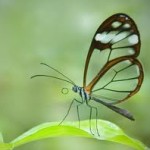Space, energy and imagination. Eifel, Spring, 2012
James Low
Eifel Retreat, Germany, 12-15 April 2012
Transcribed by Anne Conn. Edited by Barbara Terris
James’ poem “How to be Naked” was put to music and sung by the group at the end.
Download PDF

When you see images of the buddhas, their bodies are translucent. You can see right through them. That means ‘no secrets’. They’re not hiding their mobile phones from their partners because they haven’t got any pockets! To be transparent means no hiding place. Completely it is as it is. In our lives we get into trouble when we hide things, when we don’t want other people to know.
Contents
- Openness, immediacy and particularity
- Background of dzogchen
- Thought as subject and thought as object
- Consciousness and movement
- Refuge and bodhicitta
- Taking refuge in the dharma: stop cooking
- Taking refuge in the sangha: We are always and already in it
- Bodhisattva vow: other people are our world
- What dzogchen means by ‘ignorance’
- Garab Dorje. First point: direct introduction into your own nature
- Five questions to look at the nature of our mind
- What shape is the mind?
- What colour is the mind?
- Does the mind come from anywhere?
- Where does the mind stay
- Does the mind go anywhere?
- Guru Yoga: uniting with our own state
- Garab Dorje’s second point: don’t remain in doubt
- Common meditation problems
- Garab Dorje’s third point: continue with confidence
- Thoughts are the movement of the mind.


